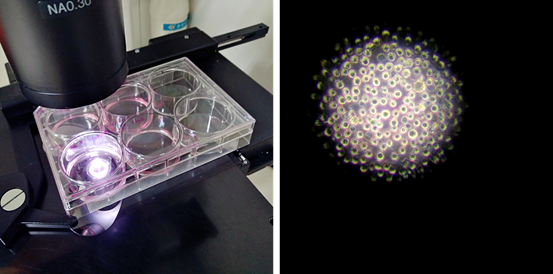SAFETY

SAFE PROJECT DESIGN
Our design avoided with any potential bio-hazard element and we made sure that all the cell and bacterial strains were strictly preserved in labs with no possibility
of exposure to eternal environment. The Jurkat, Clone E6-1 cell strains (ATCC® TIB-152™) matched with the morphological and genetical index provided by ATCC.
SAFE LAB WORK
According to the requirements of iGEM policy we never performed any dangerous experiments in daily bench work or faced any unusual safety issues.
The bench work followed some basic regulations as below:
1.The lab must use an access card to enter.
2.All involved participants needed to understand the experiment completely before commencing work.
3.All experimenters had to wear rubber gloves.
4.Any steps involving potential release of live microorganisms were performed in a bio-safety cabinet.
5.Appliances such as Bunsen burners, electric heaters and microwave ovens were not left unattended while in use.
6.All liquid and solid waste potentially containing living organism was sterilized.
7.The entire lab was sterilized using UV-light every week.
8.The last person to leave the lab always made sure that water, electricity, gas, and the air conditioner were shut down, and doors and windows have been locked before leaving.

As for lentivirus-related experiments, our team members were trained in Key Laboratory of Molecular Virology and Immunology, Institut Pasteur of Shanghai,
Chinese Academy of Science. All experiments involving lentivirus were carried out in a bio-safety cabinet to make sure the properness and safety in lentivirus packaging and transfection.

SAFE SHIPMENT
As mentioned above, the DNA parts are absolutely safe because they encode non-hazardous proteins such as FOXP3, USP7, IL-17RA and their combinations.
The DNA parts were safely confined within PCR tubes as the Parts Registry requires.
SAFE LABORATORY CONDITIONS

The laboratory our team mainly relied on was the Center for New Drug Safety Evaluation and Research, China Pharmaceutical University, which has received GLP certificate from China Food and Drug Administration (CFDA). It is the first research center in Chinese universities granted by national government to carry out pre-clinical safety evaluations on drugs. The center now has a 4200 square-meter laboratory with specific pathogen free (SPF) animal facilities (mice, rat and guinea pigs), normal animal facilities (guinea pigs, rabbits, dogs and monkeys), functional laboratory and molecular toxicology laboratory. The center also comprises independent translational medicine room,
cell culture room and microorganism culture room, making it possible to perform all kinds of experiments in a bio-safety manner.



